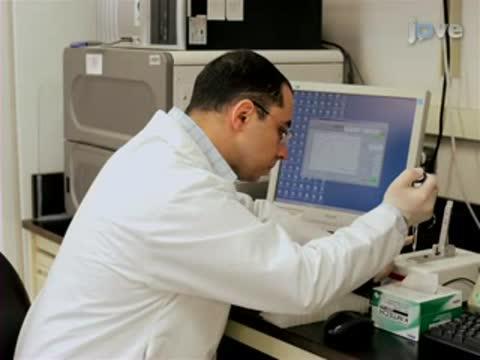On May 22, JoVE will publish details of a technique to measure the health of human genetic material in relation to a patient’s age. The method is demonstrated by the laboratory of Dr. Gil Atzmon at New York’s Albert Einstein College of Medicine. Dr. Atzmon hopes that the dissemination of this technique will lead to the development of a “genetic thermometer” to assess a patient’s health in relation to other individuals of the same age.
The JoVE publication will feature a technique that measures telomere length. Recently, telomeres have gained attention because they serve as “caps” to chromosomes. As such, they mark the ends of genetic material and ensure that genes do not degrade as cells divide. Starting with the first replication of DNA and division of a fertilized egg, chromosomes shorten because the DNA replication process is imperfect. Certain organs, like the stomach or skin, are composed of tissues that reconstitute themselves frequently. In these organs, and in young individuals, the telomerase enzyme extends telomeres with each division, negating chromosomal shortening that would otherwise occur. Telomerase activity declines as people age, and as a result telomeres shorten and can be responsible for age related afflictions and some cancers. Overall health can impact how quickly these telomeres degrade.
“Think of telomere length as though it was a thermometer. It measures the health of your genetic material,” Dr. Atzmon explains. “It tells you how fit you are in relation to the age you are. If you have longer telomeres you are in good shape, if you have shorter telomeres you are less fit for your age and are not in good health.”

The video as it appears on JoVE.com.
(Photo Credit: jove.com)
Dr. Atzmon hopes that publication of this article will impact the ageing community by classifying health relative to an individual’s age. “I published in JoVE because I want more people to use the technique. As we [the medical community] collect more data, we can build a better index of age and health by population, and more accurately place a patient on the right spot in a continuum.”
Adoption of this technique will allow clinicians to monitor a patient’s health as they are treated, by comparing telomere degradation of a sick patient to other patients with that disease and to determine if treatment is slowing degradation. Dr. Kira Henderson, JoVE Editor and Director of Review, explains, “Telomere length and telomerase function impacts several realms of biological and medical research- from preventative aging models to cancer treatments. Maintaining the telomere is a pre-requisite to extending life and improving long-term health. It is our hope that the application of this JoVE video-article will elucidate relationships between disease state and telomere function and encourage advancement in this important field of study.”